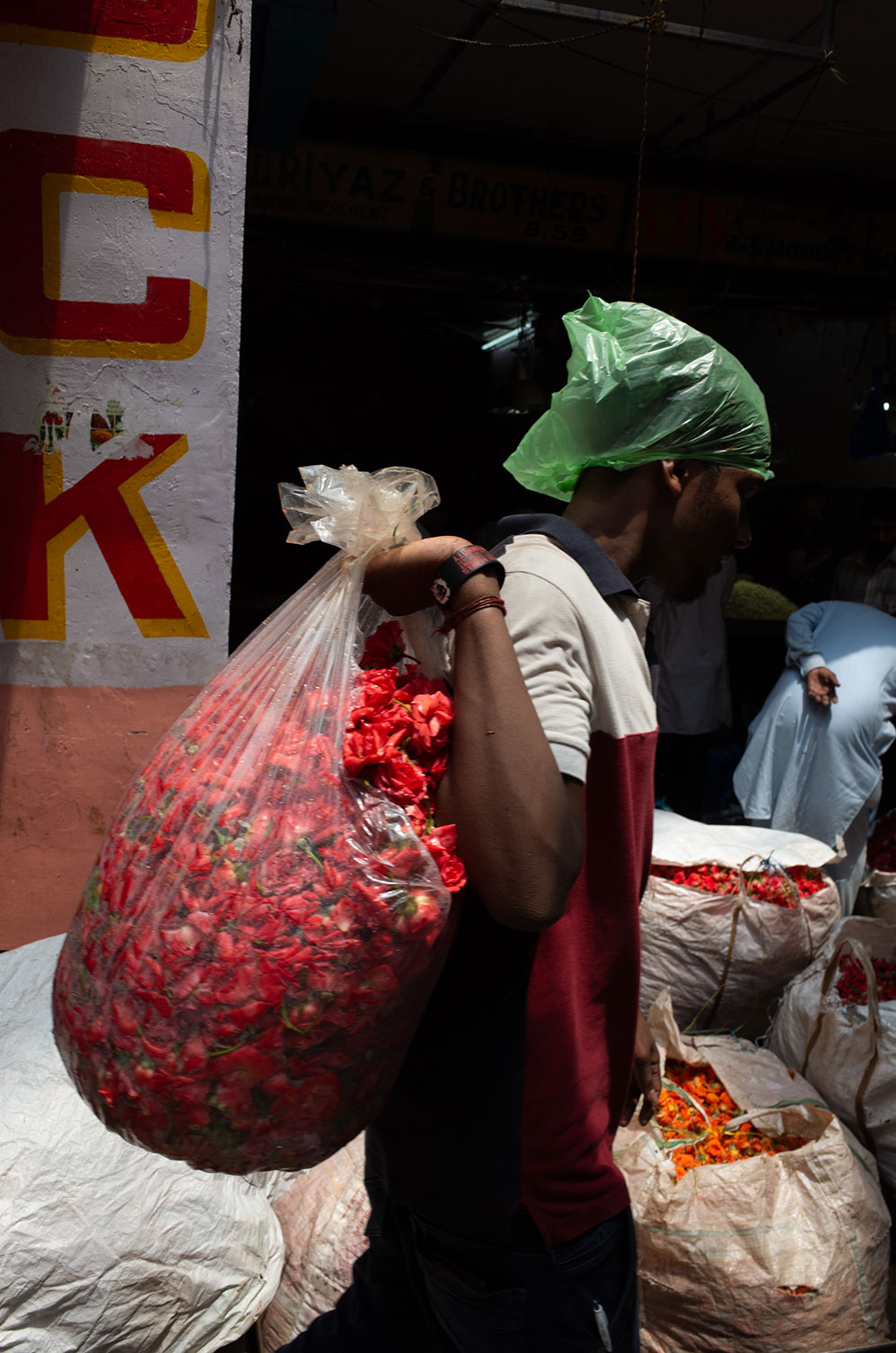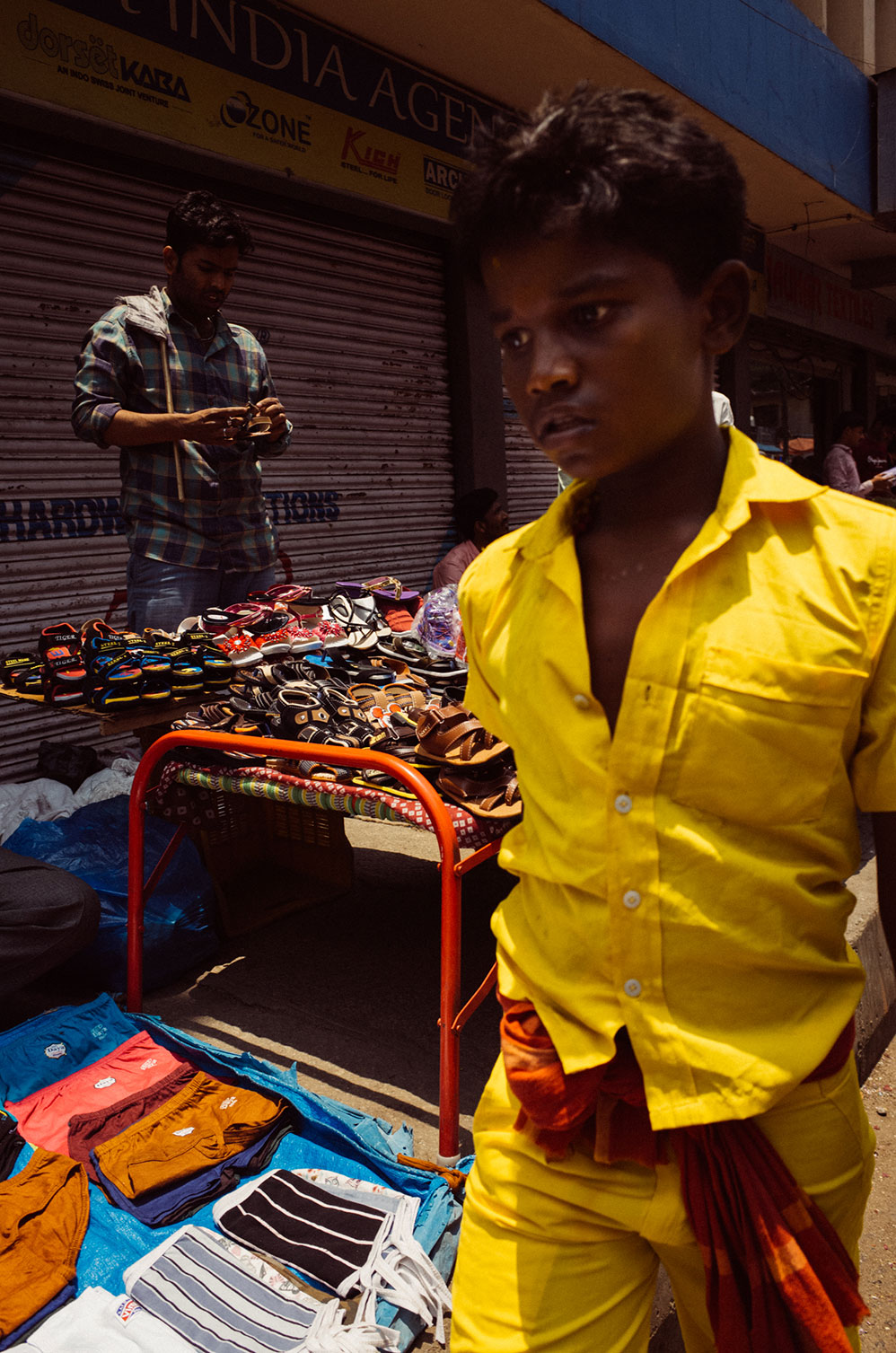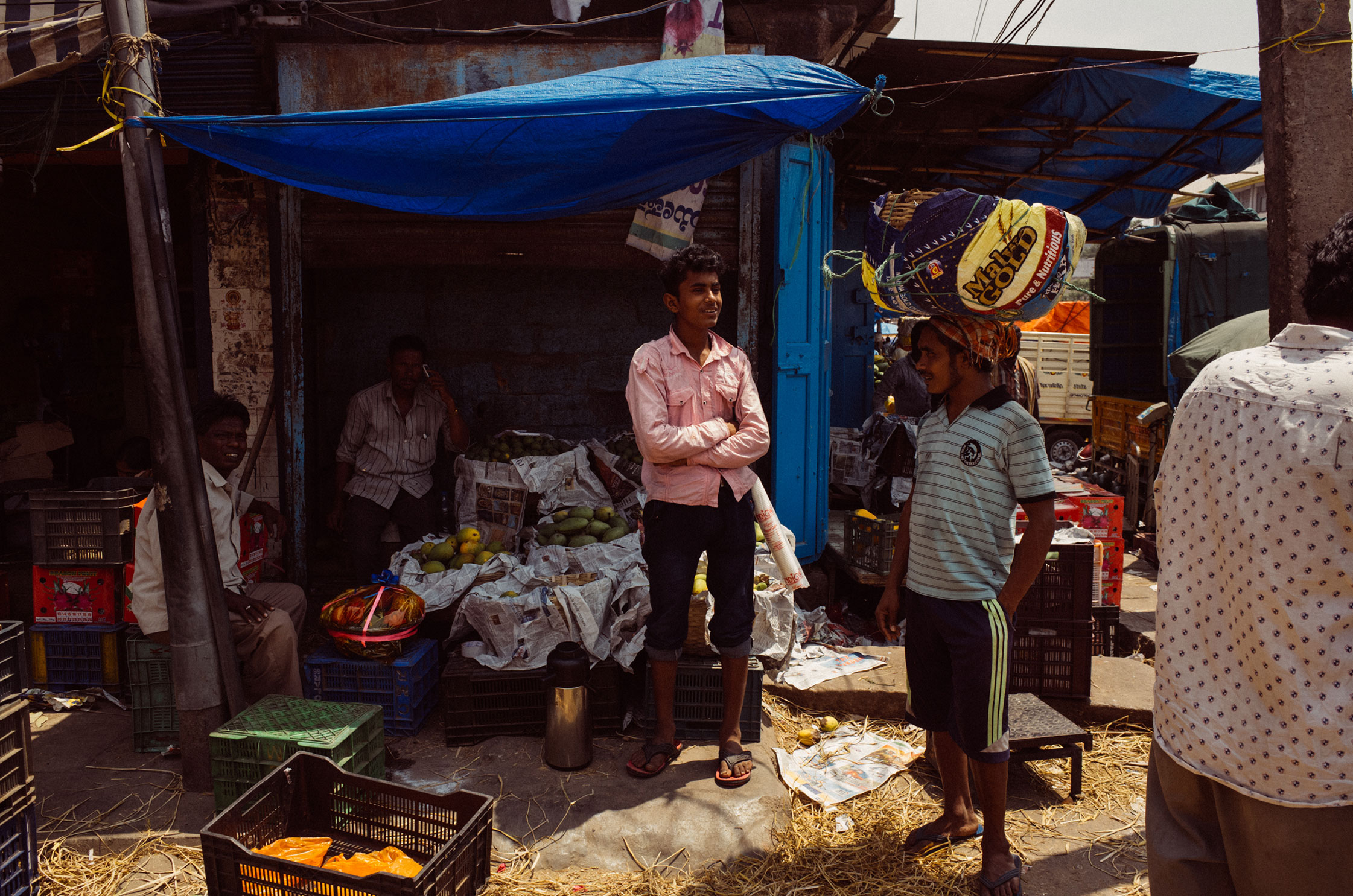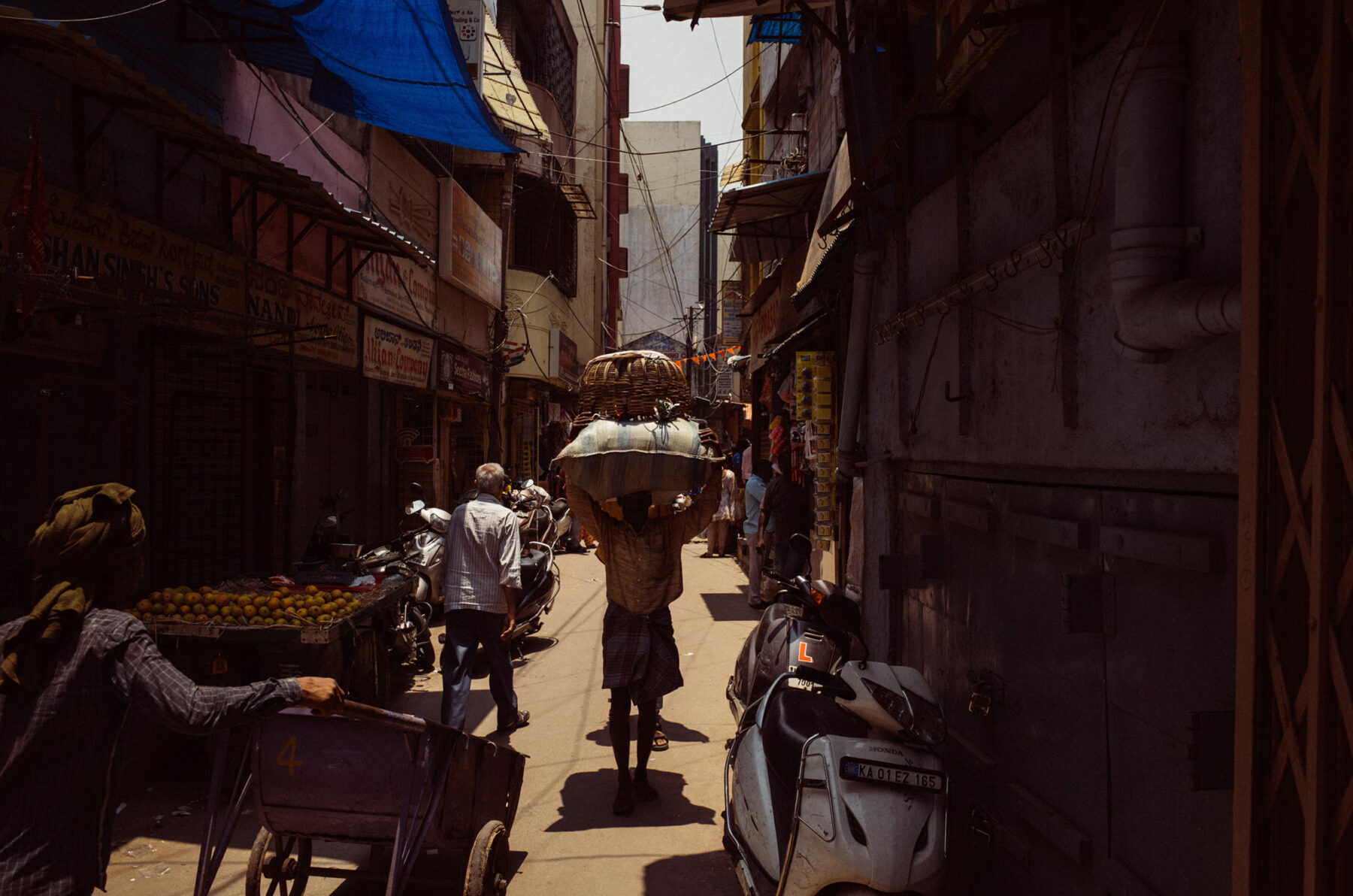It never sleeps, the local people say. Twenty four hours a day they trade their colorful food and wares in the marketplace.
Vivid colors burst out of the market stalls on the ground floor, 20 tons of flowers bought and sold there each day. Swathes of vibrant fruits and vegetables are passed between buyer and pedlar, clothed in fabrics just as bright; jewelry and trinkets change hands on the floor above; and on the third floor vendors sit and smoke and trade their metal goods. These images aim to capture the essence of the Krishna Rajendra Market in its constant motion, and suspend it in time.
The market isn’t one that tourists are particularly well-acquainted with. It’s not a “must-see” destination. You won’t catch them waving a knock-off football shirt or a defective buddha figurine. They make no pretenses and they trade in necessities. Moving through the market with a Ricoh GR point-and-shoot compact camera held at eye level, the snapshot impressions capture the day-to-day moments of the vendors as they would appear for anyone passing through.
“These images aim to capture the essence of the Krishna Rajendra Market in its constant motion, and suspend it in time.”
Market stalls first sprung up in the space around 1800. After the British East India Trading Company took the fort of Bengaluru from the Mysore Kingdom State, they declared the old battlefield a neutral zone. In this no man’s land, merchants and vendors came from neighboring towns to trade vegetables and goods with the people the city. From a few pitched stores the market grew to a bustling hub, and by 1900 it was a center for the city’s grocery trade. The Krishna Rajendra Market building was erected in 1921 to house its commerce, and in the ’90s another three-story building was added to the ever-growing exchange, and today it remains a central component of the city’s local trade.
But the business in the market is a far-cry from what the city has become known for. In recent years Bengaluru has been hailed as the “Silicon Valley of India”. Over a third of the country’s IT jobs are situated there, the third most populous city in India. But while the metropolis helps drive India into the modern age, many are left concerned that traditional businesses are being left behind. Over the past two decades the Krishna Rajendra Market has had its basic services neglected. There has been no running water and no place for refuse to go, and plans for a much-needed multi-storey car park that were outlined four years ago have seen no progress. The lack of room has forced new market stalls to squeeze into what little space is left, forcing the vendors into ever-worsening conditions.
The market is almost entirely unregulated by any official body now. However, the market will continue, regardless, as an organism borne on by necessity. These images preserve the essential, everyday interactions of an India that is too easily forgotten, as the country presses ever further into modernity.
By 1900 the market was a thriving center for Bengaluru’s grocery trade.

Today, around 20 tons of flowers are bought and sold in the market each day.















We hope you enjoyed this photo essay. If you’re looking for some more visual inspiration, why not have a look at a few more from our collection? Or else, explore some of our other stories in India.
Text: Louis Harnett O’Meara
Photography: Robert Rieger

